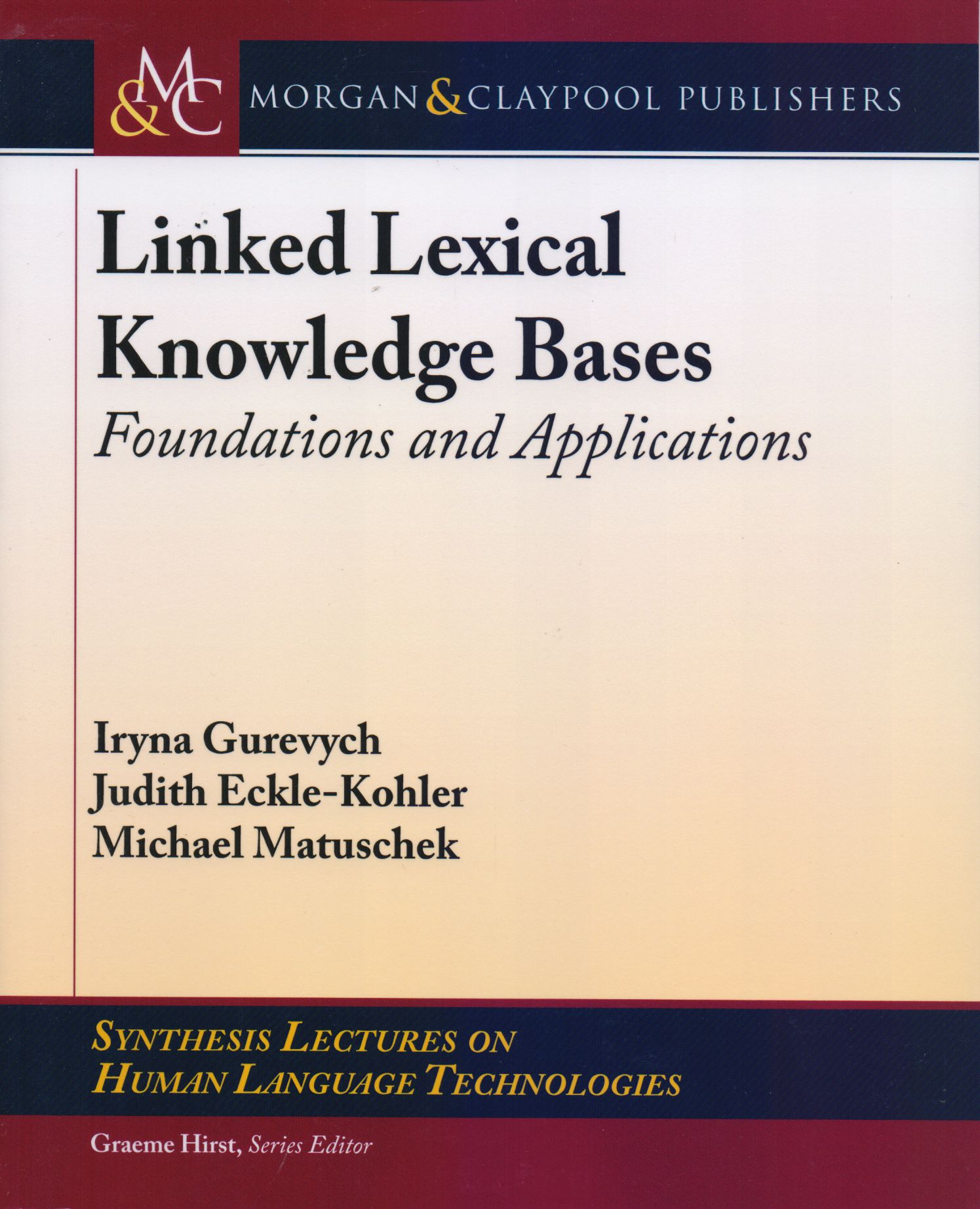Libros relacionados
 |
Guerra, en Su Nombre: los Medios de la Guerra en la Guerra de los Medios Viscardi, Ricardo Arcibel Editores |
 |
Resistive Random Access Memory (Rram): From Devices To Array Architectures Yu, Shimeng Morgan & Claypool Publishers |
 |
Linked Lexical Knowledge Bases: Foundations And Applications Gurevych, Iryna / Eckle-Kohler, Judith / Matuschek, Michael Morgan & Claypool Publishers |
 |
Design Of Visualizations For Human-Information Interaction: A Pattern-Based Fram Sedig, Kamran / Parsons, Paul Morgan & Claypool Publishers |
 |
Minitab Handbook: Updated For Release 16 Ryan, Barbara / Joiner, Brian / Cryer, Jonathan Cengage Learning Editores, S.A. de C.V. |
 |
Innovación: Desafío Para el Desarrollo en el Siglo XXI Mutis, Josè Celestino Universidad Nacional de Colombia |
 |
Conceptos Fundamentales en la Planificación Estratégica de las Relaciones Públic Matilla, Kathy / Ricarte, José María Editorial Uoc |


|
Título: Wireless Video Communications | |
| Autor: Ci Song | Precio: Desconocido | |
| Editorial: Wiley | Año: 2009 | |
| Tema: Tecnologia, Comunicacion, Internet | Edición: 1ª | |
| Sinopsis | ISBN: 9780470773079 | |
| Haohong Wang received the B.S. degree in computer science and the M.Eng. degree in computer & its application both from Nanjing University, the M.S. degree in computer science from University of New Mexico, and the Ph.D. degree in Electrical and computer engineering from Northwestern University. He is currently a Senior System Architect and Manager at Marvell Semiconductors at Santa Clara, California. Prior to joining Marvell, he held various technical positions at AT&T, Catapult Communications, and Qualcomm. Dr. Wang's research involves the areas of multimedia communications, graphics and image/video analysis and processing. He has published more than 40 articles in peer-reviewed journals and International conferences. He is the inventor of more than 40 U.S. patens and pending applications. He is the co-author of 4G Wireless Video Communications (John Wiley & Sons, 2009), and Computer Graphics (1997). Dr. Wang is the Associate Editor-in-Chief of the Journal of Communications, Editor-in-Chief of the IEEE MMTC E-Letter, an Associate Editor of the Journal of Computer Systems, Networks, and Communications and a Guest Editor of the IEEE Transactions on Multimedia. He served as a Guest Editor of the IEEE Communications Magazine, Wireless Communications and Mobile Computing, and Advances in Multimedia. Dr. Wang is the Technical Program Chair of IEEE GLOBECOM 2010 (Miami). He served as the General Chair of the 17th IEEE International Conference on Computer Communications and Networks (ICCCN 2008) (US Virgin Island), and the Technical Program Chair of many other International conferences including IEEE ICCCN 2007 (Honolulu), IMAP 2007 (Honolulu), ISMW 2006 (Vancouver), and the ISMW 2005 (Maui). He is the Founding Steering Committee Chair of the annual International Symposium on Multimedia over Wireless (2005-). He chairs the TC Promotion & Improvement Sub-Committee, as well as the Cross-layer Communications SIG of the IEEE Multimedia Communications Technical Committee. He is also an elected member of the IEEE Visual Signal Processing and Communications Technical Committee (2005-), and IEEE Multimedia and Systems Applications Technical Committee (2006-). Lisimachos P. Kondi received a diploma in electrical engineering from the Aristotle University of Thessaloniki, Greece, in 1994 and the M.S. and Ph.D. degrees, both in electrical and computer engineering, from Northwestern University, Evanston, IL, USA in 1996 and 1999, respectively. He is currently an Assistant Professor in the Department of Computer Science at the University of Ioannina, Greece. His research interests are in the general area of multimedia communications and signal processing, including image and video compression and transmission over wireless channels and the Internet, super-resolution of video sequences and shape coding. Dr Kondi is an Associate Editor of the EURASIP Journal of Advances in Signal Processing and an Associate Editor of IEEE Signal Processing Letters . Ajay Luthra received his B.E. (Hons) from BITS, Pilani, India in 1975, M.Tech. in Communications Engineering from IIT Delhi in 1977 and Ph.D. from Moore School of Electrical Engineering, University of Pennsylvania in 1981. From 1981 to 1984 he was a Senior Engineer at Interspec Inc., where he was involved in digital signal and image processing for bio-medical applications. From 1984 to 1995 he was at Tektronix Inc., where from 1985 to 1990 he was manager of the Digital Signal and Picture Processing Group and from 1990 to 1995 Director of the Communications/Video Systems Research Lab. He is currently a Senior Director in the Advanced Technology Group at Connected Home Solutions, Motorola Inc., where he is involved in advanced development work in the areas of digital video compression and processing, streaming video, interactive TV, cable head-end system design, advanced set top box architectures and IPTV. Dr Luthra has been an active member of the MPEG Committee for more than twelve years where he has chaired several technical sub-groups and pioneered the MPEG-2 extensions for studio applications. He is currently an associate rapporteur/co-chair of the Joint Video Team (JVT) consisting of ISO/MPEG and ITU-T/VCEG experts working on developing the next generation of video coding standard known as MPEG-4 Part 10 AVC/H.264. He is also the USA's Head of Delegates (HoD) to MPEG. He was an Associate Editor of IEEE Transactions on Circuits and Systems for Video Technology (2000-2002) and a Guest Editor for its Special Issues on the H.264/AVC Video Coding Standard, July 2003 and Streaming Video, March 2001. He holds 30 patents, has published more than 30 papers and has been a guest speaker at numerous conferences. Song Ci is an Assistant Professor of computer and electronics engineering at the University of Nebraska-Lincoln. He received his B.S. from Shandong University, Jinan, China, in 1992, M.S. from the Chinese Academy of Sciences, Beijing, China, in 1998, and a Ph.D. from the University of Nebraska-Lincoln in 2002, all in Electrical Engineering. He also worked with China Telecom (Shandong) as a telecommunications engineer from 1992 to 1995, and with the Wireless Connectivity Division of 3COM Cooperation, Santa Clara, CA, as a R&D Engineer in 2001. Prior to joining the University of Nebraska Lincoln, he was an Assistant Professor of computer science at the University of Massachusetts Boston and the University of Michigan-Flint. He is the founding director of the Intelligent Ubiquitous Computing Laboratory (iUbiComp Lab) at the Peter Kiewit Institute of the University of Nebraska. His research interests include cross-layer design for multimedia wireless communications, intelligent network management, resource allocation and scheduling in various wireless networks and power-aware multimedia embedded networked sensing system design and development. He has published more than 60 research papers in referred journals and at international conferences in those areas. Dr Song Ci serves currently as Associate Editor on the Editorial Board of Wiley Wireless Communications and Mobile Computing (WCMC) and Guest Editor of IEEE Network Magazine Special Issue on Wireless Mesh Networks: Applications, Architectures and Protocols , Editor of Journal of Computer Systems, Networks, and Communications and an Associate Editor of the Wiley Journal of Security and Communication Networks . He also serves as the TPC co-Chair of IEEE ICCCN 2007, TPC co-Chair of IEEE WLN 2007, TPC co-Chair of the Wireless Applications track at IEEE VTC 2007 Fall, the session Chair at IEEE MILCOM 2007 and as a reviewer for numerous referred journals and technical committee members at many international conferences. He is the Vice Chair of Communications Society of IEEE Nebraska Section , Senior Member of the IEEE and Member of the ACM and the ASHRAE.
A comprehensive presentation of the video communication techniques and systems, this book examines 4G wireless systems which are set to revolutionise ubiquitous multimedia communication. 4G Wireless Video Communications covers the fundamental theory and looks at systems' descriptions with a focus on digital video. It addresses the key topics associated with multimedia communication on 4G networks, including advanced video coding standards, error resilience and error concealment techniques, as well as advanced content-analysis and adaptation techniques for video communications, cross-layer design and optimization frameworks and methods. It also provides a high-level overview of the digital video compression standard MPEG-4 AVC/H.264 that is expected to play a key role in 4G networks. Material is presented logically allowing readers to turn directly to specific points of interest. The first half of the book covers fundamental theory and systems, while the second half moves onto advanced techniques and applications. This book is a timely reflection of the latest advances in video communications for 4G wireless systems.One of the first books to study the latest video communications developments for emerging 4G wireless systems Considers challenges and techniques in video delivery over 4G wireless systems Examines system architecture, key techniques and related standards of advanced wireless multimedia applications Written from both the perspective of industry and academia Forword. Preface. About the Authors. About the Series Editors. 1 Introduction. 1.1 Why 4G? 1.2 4G Status and Key Technologies. 1.2.1 3GPP LTE. 1.2.2 Mobile WiMAX. 1.3 Video Over Wireless. 1.3.1 Video Compression Basics. 1.3.2 Video Coding Standards. 1.3.3 Error Resilience. 1.3.4 Network Integration. 1.3.5 Cross-Layer Design for Wireless Video Delivery. 1.4 Challenges and Opportunities for 4G Wireless Video. References. 2 Wireless Communications and Networking. 2.1 Characteristics and Modeling of Wireless Channels. 2.1.1 Degradation in Radio Propagation. 2.1.2 Rayleigh Fading Channel. 2.2 Adaptive Modulation and Coding. 2.2.1 Basics of Modulation Schemes. 2.2.2 System Model of AMC. 2.2.3 Channel Quality Estimation and Prediction. 2.2.4 Modulation and Coding Parameter Adaptation. 2.2.5 Estimation Error and Delay in AMC . 2.2.6 Selection of Adaptation Interval. 2.3 Orthogonal Frequency Division Multiplexing. 2.3.1 Background. 2.3.2 System Model and Implementation. 2.3.3 Pros and Cons. 2.4 Multiple-Input Multiple-Output Systems. 2.4.1 MIMO System Model. 2.4.2 MIMO Capacity Gain: Multiplexing. 2.4.3 MIMO Diversity Gain: Beamforming. 2.4.4 Diversity-Multiplexing Trade-offs. 2.4.5 Space-Time Coding. 2.5 Cross-Layer Design of AMC and HARQ. 2.5.1 Background. 2.5.2 System Modeling. 2.5.3 Cross-Layer Design. 2.5.4 Performance Analysis. 2.5.5 Performance. 2.6 Wireless Networking. 2.6.1 Layering Network Architectures. 2.6.2 Network Service Models. 2.6.3 Multiplexing Methods. 2.6.4 Connection Management in IP-Based Data Networks. 2.6.5 QoS Handoff. 2.7 Summary. References. 3 Video Coding and Communications. 3.1 Digital Video Compression - Why and How Much? 3.2 Basics. 3.2.1 Video Formats. 3.2.1.1 Scanning. 3.2.1.2 Color. 3.2.1.3 Luminance, Luma, Chrominance, Chroma. 3.3 Information Theory. 3.3.1 Entropy and Mutual Information. 3.3.2 Encoding of an Information Source. 3.3.3 Variable Length Coding. 3.3.4 Quantization. 3.4 Encoder Architectures. 3.4.1 DPCM . 3.4.2 Hybrid Transform-DPCM Architecture. 3.4.3 A Typical Hybrid Transform DPCM-based Video Codec. 3.4.4 Motion Compensation. 3.4.5 DCT and Quantization. 3.4.6 Procedures Performed at the Decoder. 3.5 Wavelet-Based Video Compression. 3.5.1 Motion-Compensated Temporal Wavelet Transform Using Lifting. References. 4 4G Wireless Communications and Networking. 4.1 IMT-Advanced and 4G. 4.2 LTE. 4.2.1 Introduction. 4.2.2 Protocol Architecture. 4.2.2.1 E-UTRAN Overview Architecture. 4.2.2.2 User Plane and Control Plane. 4.2.2.3 LTE Physical Layer. 4.2.3 LTE Layer 2. 4.2.4 The Evolution of Architecture. 4.2.5 LTE Standardization. 4.3 WIMAX-IEEE 802.16m. 4.3.1 Network Architecture. 4.3.2 System Reference Model. 4.3.3 Protocol Structure. 4.3.3.1 MAC Layer. 4.3.3.2 PHY Layer. 4.3.4 Other Functions Supported by IEEE 802.16m for Further Study. 4.4 3GPP2 UMB. 4.4.1 Architecture Reference Model. 4.4.2 Layering Architecture and Protocols. Acknowledgements. References. 5 Advanced Video Coding (AVC)/H.264 Standard. 5.1 Digital Video Compression Standards. 5.2 AVC/H.264 Coding Algorithm. 5.2.1 Temporal Prediction. 5.2.1.1 Motion Estimation. 5.2.1.2 P and B MBs. 5.2.1.3 Multiple References. 5.2.1.4 Motion Estimation Accuracy. 5.2.1.5 Weighted Prediction. 5.2.1.6 Frame and Field MV. 5.2.1.7 MV Compression. 5.2.2 Spatial Prediction. 5.2.3 The Transform. 5.2.3.1 4 x 4 Integer DCT and Inverse Integer DCT Transform. 5.2.3.2 8 x 8 Transform. 5.2.3.3 Hadamard Transform for DC. 5.2.4 Quantization and Scaling. 5.2.5 Scanning. 5.2.6 Variable Length Lossless Codecs. 5.2.6.1 Exp-Golomb Code. 5.2.6.2 CAVLC (Context Adaptive VLC). 5.2.6.3 CABAC . 5.2.7 Deblocking Filter. 5.2.8 Hierarchy in the Coded Video. 5.2.8.1 Basic Picture Types (I, P, B, B R ). 5.2.8.2 SP and SI Pictures. 5.2.9 Buffers. 5.2.10 Encapsulation/Packetization. 5.2.11 Profiles. 5.2.11.1 Baseline Profile . 5.2.11.2 Extended Profile. 5.2.11.3 Main Profile. 5.2.11.4 High Profile. 5.2.11.5 High10 Profile. 5.2.11.6 High 4:2:2 Profile. 5.2.11.7 High 4:4:4 Predictive Profile. 5.2.11.8 Intra Only Profiles. 5.2.12 Levels. 5.2.12.1 Maximum Bit Rates, Picture Sizes and Frame Rates. 5.2.12.2 Maximum CPB, DPB and Reference Frames. 5.2.13 Parameter Sets. 5.2.13.1 Sequence Parameter Sets (SPS). 5.2.13.2 Picture Parameter Sets (PPS). 5.2.14 Supplemental Enhancement Information (SEI). 5.2.15 Subjective Tests. References. 6 Content Analysis for Communications. 6.1 Introduction. 6.2 Content Analysis. 6.2.1 Low-Level Feature Extraction. 6.2.1.1 Edge. 6.2.1.2 Shape. 6.2.1.3 Color. 6.2.1.4 Texture. 6.2.1.5 Motion. 6.2.1.6 Mathematical Morphology. 6.2.2 Image Segmentation. 6.2.2.1 Threshold and Boundary Based Segmentation. 6.2.2.2 Clustering Based Segmentation. 6.2.2.3 Region Based Approach. 6.2.2.4 Adaptive Perceptual Color-Texture Segmentation. 6.2.3 Video Object Segmentation. 6.2.3.1 COST211 Analysis Model. 6.2.3.2 Spatial-Temporal Segmentation. 6.2.3.3 Moving Object Tracking. 6.2.3.4 Head-and-Shoulder Object Segmentation. 6.2.4 Video Structure Understanding. 6.2.4.1 Video Abstraction. 6.2.4.2 Video Summary Extraction. 6.2.5 Analysis Methods in Compressed Domain. 6.3 Content-Based Video Representation. 6.4 Content-Based Video Coding and Communications. 6.4.1 Object-Based Video Coding. 6.4.2 Error Resilience for Object-Based Video. 6.5 Content Description and Management. 6.5.1 MPEG-7. 6.5.2 MPEG-21. References. 7 Video Error Resilience and Error Concealment. 7.1 Introduction. 7.2 Error Resilience. 7.2.1 Resynchronization Markers. 7.2.2 Reversible Variable Length Coding (RVLC). 7.2.3 Error-Resilient Entropy Coding (EREC). 7.2.4 Independent Segment Decoding. 7.2.5 Insertion of Intra Blocks or Frames. 7.2.6 Scalable Coding. 7.2.7 Multiple Description Coding. 7.3 Channel Coding. 7.4 Error Concealment. 7.4.1 Intra Error Concealment Techniques 7.4.2 Inter Error Concealment Techniques. 7.5 Error Resilience Features of H.264/AVC. 7.5.1 Picture Segmentation. 7.5.2 Intra Placement. 7.5.3 Reference Picture Selection. 7.5.4 Data Partitioning. 7.5.5 Parameter Sets. 7.5.6 Flexible Macroblock Ordering. 7.5.7 Redundant Slices (RSs). References. 8 Cross-Layer Optimized Video Delivery over 4G Wireless Networks. 8.1 Why Cross-Layer Design? 8.2 Quality-Driven Cross-Layer Framework. 8.3 Application Layer. 8.4 Rate Control at the Transport Layer. 8.4.1 Background. 8.4.2 System Model. 8.4.3 Network Setting. 8.4.4 Problem Formulation. 8.4.5 Problem Solution. 8.4.6 Performance Evaluation. 8.5 Routing at the Network Layer. 8.5.1 Background. 8.5.2 System Model. 8.5.3 Routing Metric. 8.5.4 Problem Formulation. 8.5.5 Problem Solution. 8.5.6 Implementation Considerations. 8.5.7 Performance Evaluation. 8.6 Content-Aware Real-Time Video Streaming. 8.6.1 Background. 8.6.2 Background. 8.6.3 Problem Formulation. 8.6.4 Routing Based on Priority Queuing. 8.6.5 Problem Solution. 8.6.6 Performance Evaluation. 8.7 Cross-Layer Optimization for Video Summary Transmission. 8.7.1 Background. 8.7.2 Problem Formulation. 8.7.3 System Model. 8.7.4 Link Adaptation for Good Content Coverage. 8.7.5 Problem Solution. 8.7.6 Performance Evaluation. 8.8 Conclusions. References. 9 Content-based Video Communications. 9.1 Network-Adaptive Video Object Encoding. 9.2 Joint Source Coding and Unequal Error Protection. 9.2.1 Problem Formulation. 9.2.1.1 System Model. 9.2.1.2 Channel Model. 9.2.1.3 Expected Distortion. 9.2.1.4 Optimization Formulation. 9.2.2 Solution and Implementation Details. 9.2.2.1 Packetization and Error Concealment. 9.2.2.2 Expected Distortion. 9.2.2.3 Optimal Solution. 9.2.3 Application on Energy-Efficient Wireless Network. 9.2.3.1 Channel Model. 9.2.3.2 Experimental Results. 9.2.4 Application on Differentiated Services Networks. 9.3 Joint Source-Channel Coding with Utilization of Data Hiding. 9.3.1 Hiding Shape in Texture. 9.3.2 Joint Source-Channel Coding. 9.3.3 Joint Source-Channel Coding and Data Hiding. 9.3.3.1 System Model. 9.3.3.2 Channel Model. 9.3.3.3 Expected Distortion. 9.3.3.4 Implementation Details. 9.3.4 Experimental Results. References. 10 AVC/H.264 Application - Digital TV. 10.1 Introduction. 10.1.1 Encoder Flexibility. 10.2 Random Access. 10.2.1 GOP Bazaar. 10.2.1.1 MPEG-2 Like, 2B, GOP Structure. 10.2.1.2 Reference B and Hierarchical GOP structures. 10.2.1.3 Low Delay Structure. 10.2.1.4 Editable Structure. 10.2.1.5 Others. 10.2.2 Buffers, Before and After. 10.2.2.1 Coded Picture Buffer. 10.2.2.2 Decoded Picture Buffer (DPB). 10.3 Bitstream Splicing. 10.4 Trick Modes. 10.4.1 Fast Forward. 10.4.2 Reverse. 10.4.3 Pause. 10.5 Carriage of AVC/H.264 Over MPEG-2 Systems. 10.5.1 Packetization. 10.5.1.1 Packetized Elementary Stream (PES). 10.5.1.2 Transport Stream (TS). 10.5.1.3 Program Stream. 10.5.2 Audio Video Synchronization. 10.5.3 Transmitter and Receiver Clock Synchronization. 10.5.4 System Target Decoder and Timing Model. References. 11 Interactive Video Communications. 11.1 Video Conferencing and Telephony. 11.1.1 IP and Broadband Video Telephony. 11.1.2 Wireless Video Telephony. 11.1.3 3G-324M Protocol. 11.1.3.1 Multiplexing and Error Handling. 11.1.3.2 Adaptation Layers. 11.1.3.3 The Control Channel. 11.1.3.4 Audio and Video Channels. 11.1.3.5 Call Setup. 11.2 Region-of-Interest Video Communications. 11.2.1 ROI based Bit Allocation. 11.2.1.1 Quality Metric for ROI Video. 11.2.1.2 Bit Allocation Scheme for ROI Video. 11.2.1.3 Bit Allocation Models. 11.2.2 Content Adaptive Background Skipping. 11.2.2.1 Content-based Skip Mode Decision. 11.2.2.2 rho Budget Adjustment. References. 12 Wireless Video Streaming. 12.1 Introduction. 12.2 Streaming System Architecture. 12.2.1 Video Compression. 12.2.2 Application Layer QoS Control. 12.2.2.1 Rate Control. 12.2.2.2 Rate Shaping. 12.2.2.3 Error Control. 12.2.3 Protocols. 12.2.3.1 Transport Protocols. 12.2.4 Video/Audio Synchronization. 12.3 Delay-Constrained Retransmission. 12.3.1 Receiver-Based Control. 12.3.2 Sender-Based Control. 12.3.3 Hybrid Control. 12.3.4 Rate-Distortion Optimal Retransmission. 12.4 Considerations for Wireless Video Streaming. 12.4.1 Cross-Layer Optimization and Physical Layer Consideration. 12.5 P2P Video Streaming. References. Index. |
||
Librería Bonilla SA de CV © Todos los derechos reservados. 2019
Última actualización: Jul 2019




